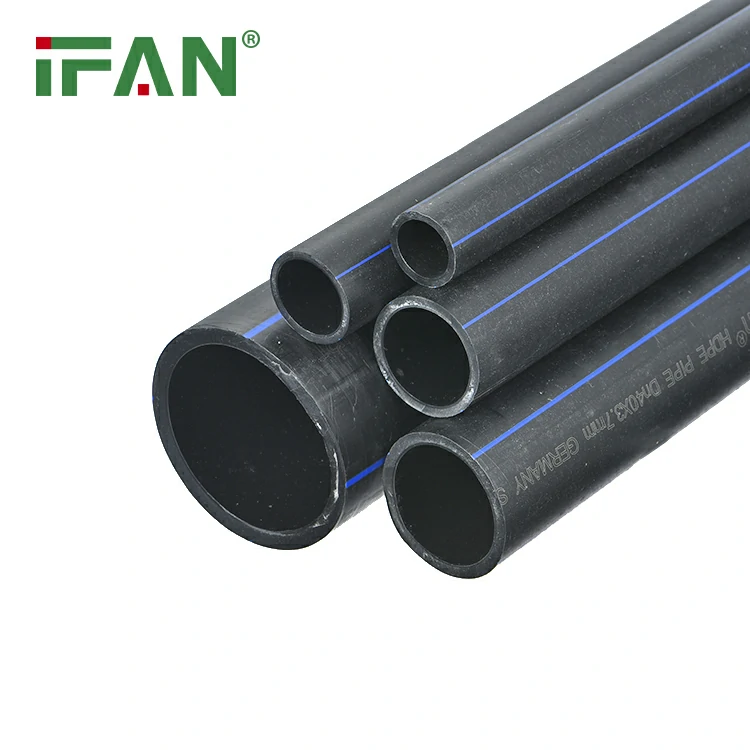Introduction
The installation phase plays a pivotal role in determining the success and longevity of any infrastructure project, and High-Density Polyethylene (HDPE) pipes are no exception. This article delves into the intricacies of HDPE pipe installation, providing insights into best practices and professional tips that ensure a seamless and reliable construction process.

Ensuring Success from the Start: Preliminary Considerations
1. Site Assessment and Planning
Surveying the Terrain: A Crucial Starting Point
Before commencing HDPE pipe installation, a thorough site assessment is essential. Analyze the terrain, identify potential obstacles, and consider factors such as soil composition and groundwater levels. This preliminary step lays the foundation for a well-informed installation plan, minimizing surprises and optimizing the use of resources throughout the project.
2. Proper Handling and Storage
Preserving Integrity: HDPE Pipe Handling Guidelines
HDPE pipes are known for their flexibility, but proper handling is still crucial to preserve their integrity. Avoid dropping or dragging pipes, as this can lead to damage or deformities. Store the pipes on flat surfaces, and if stacking is necessary, use suitable supports to prevent distortion. Adhering to these guidelines ensures that the pipes maintain their structural strength during transportation and storage.
3. Quality Assurance and Inspection
Vigilance in Quality: Inspecting HDPE Pipes
Before installation, conduct a thorough inspection of HDPE pipes to ensure they meet quality standards. Look for any manufacturing defects, damages incurred during transportation, or issues with fusion joints. Identifying and addressing potential issues at this stage is critical for preventing future complications and ensuring the overall success of the HDPE pipe installation.
Expert Techniques for Flawless HDPE Pipe Installation
1. Fusion Welding Mastery
The Art of Fusion: Achieving Seamless Joints
Fusion welding is a cornerstone of HDPE pipe installation. Mastering this technique is crucial for creating seamless joints that guarantee the integrity of the pipeline. Ensure that fusion equipment is in optimal condition, follow recommended welding parameters, and conduct regular inspections. A well-executed fusion welding process minimizes the risk of leaks and contributes to the overall reliability of the HDPE pipeline.
2. Strategic Trenching and Backfilling
Precision in the Ground: Trenching and Backfilling
Proper trenching and backfilling techniques are essential for the stability and protection of HDPE pipes. Trench dimensions should accommodate the pipe diameter and allow for proper compaction during backfilling. Carefully backfill the trench in layers, avoiding excessive force that may damage the pipes. Strategic trenching and backfilling practices contribute to the longevity of the installed HDPE pipeline.
3. Quality Control Throughout Installation
Vigilance at Every Step: Continuous Quality Monitoring
Maintaining a vigilant approach to quality control throughout the installation process is a hallmark of successful HDPE pipe installation. Regularly inspect fusion joints, ensure proper alignment, and monitor the overall integrity of the pipeline. This ongoing quality control ensures that any issues are identified and addressed promptly, preventing potential failures and ensuring the longevity of the HDPE pipe system.
Conclusion:
In conclusion, achieving excellence in HDPE pipe installation involves meticulous planning, adherence to best practices, and continuous quality control. Whether navigating the preliminary considerations, mastering fusion welding techniques, or implementing strategic trenching and backfilling, each step contributes to the overall success of the project. By incorporating these best practices and professional tips, construction teams can ensure a flawless HDPE pipe installation that stands the test of time.
Contact:
IFAN is a manufacturer with 30 years of experience, specializing in plastic pipes, fittings, and valves in China. If you are interested in IFAN’s copper valves, PPR valves, pipe, and fittings, feel free to contact us. IFAN provides various standard pipes to meet your specific needs. Click the link below to explore IFAN’s diverse, cost-effective valve products, as well as related pipeline system products.
We will reply your email or fax within 24 hours.
You can call us at any time if there is any question on our production.
For more information,pls visit our webside https://www.ifanplus.com/
Pls Mailto: [email protected]






